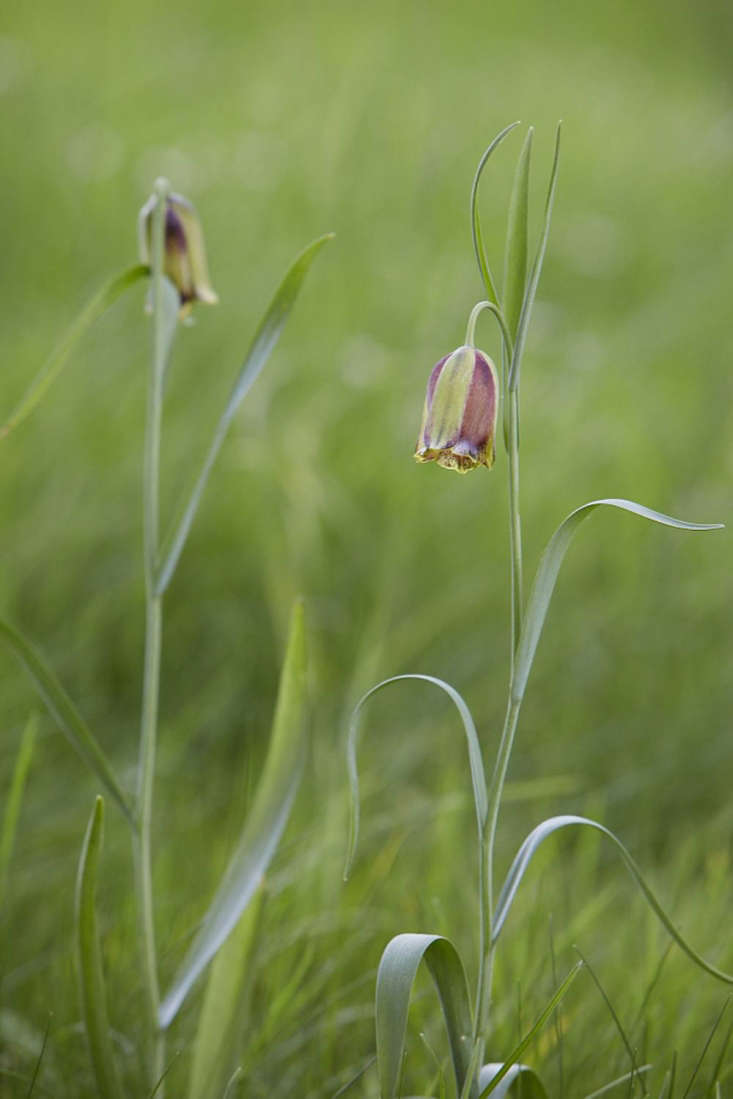The zeitgeist flower for growers and florists this year is the fritillary. Not the little snake’s heads, long since fêted, but their taller, sturdier, more architectural relations, Fritillaria persica. With whorls of waxy blooms around a solid stalk, they add height and a degree of weirdness to a display. That said, the smaller bells are catching attention too. Here, Polly Nicholson of Bayntun Flowers in Wiltshire shares expert advice:
Photography by Britt Willoughby Dyer, for Gardenista.

Alpine gardening: For those of us who don’t quite grasp the concept, these little Fritillaria davisii are a lesson in this kind of approach. Small, delicately colored, with a love of good drainage, they respond to a little pampering. Raised up in a flat, wide container (or grown in a Victorian rockery if you prefer) they can be examined, regularly, instead of getting lost out in the open.

Polly planted 1,000 bulbs of the uva-vulpis variety in her flower field, away from the house. “The bulbs are very good value, so you can afford to be generous,” says Polly, who sources hers from Dix in the Netherlands. “We planted 1,000 in the field this year, and will double that, at least, for next year.”
They are a wonderfully neat shape, and perfectly suit their nickname of “fox’s grape.” With their dark, purple-brown flowers edged in yellow, Fritillaria uva-vulpis need to be grown for cutting, or kept at eye level in a container: brick walls and early spring earth would swallow them up.


The dramatic coloring and structure of Fritillaria persica ‘Bicolor’ makes it instantly desirable. Along with ‘Ivory Bells’ and ‘Midnight Bells’, the bulbs are eye-wateringly expensive. This is justified by their desirability for florists with a connoisseur’s eye, like Shane Connolly: “I am aiming to grow things which are different and set us apart,” says Polly.

Out in the open, Polly’s bulbs are not mollycoddled, putting up with wind, rain and hail, and they have no chemical leg-ups, being organically grown. Because they are destined for the business, soil conditions need to be optimum, with care taken against rotting during a damp spring. They are grown in a bed of sand, to a depth of about 2 inches. Their large bulbs are planted deep, which in turn helps to support the stems. They have repaid the trouble, by growing to more than 3 feet tall. “The question will be whether they come back this well next year,” says Polly.

The simple Persian fritillaries, F. persica and F. persica ‘Alba’ are not very expensive and would make a better choice to do-or-die in a border. Their unassuming quality is also more sociable. “They would work well planted in small groups of two or three or five, with tulips, native ferns, forget-me-nots and so on,” says Polly.

Too ostentatious for a border, says Polly, and too precious: grow F. persica ‘Ivory Bells’ to be cut and brought indoors.

If you think about where they come from, it makes perfect sense that Persian fritillaries demand excellent drainage on un-enriched soil. Also required: full sun or light shade. Polly’s advice is to dig a good hole, adding grit or sharp sand. To prevent the bulb from rotting, plant it sideways.













Have a Question or Comment About This Post?
Join the conversation (0)